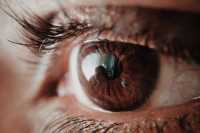
27 Mar Little Evidence COVID-19 Can Be Spread Through Tears
MedicalResearch.com Interview with:
Dr. Rupesh Agrawal, MD
Associate Professor
Senior Consultant Ophthalmologist
Duke-NUS Medical School, Singapore
MedicalResearch.com: What is the background for this study?
Wasn’t Dr Li Wenliang, the Chinese physician who first alerted his community of coronavirus an opthalmologist, with possible exposure to tears from this surgical work with glaucoma patients?
Response: Since the start of the pandemic, there have been multiple reports which suggested the transmission of SARS-CoV-2 via ocular fluids. As ophthalmologists, we come into close contact with tears on a daily basis during our clinical examination. Furthermore, many equipment in the clinic like the Goldman tonometer come into direct contact with such ocular fluids, providing a channel for viral transmission. The evidence, as of date, were mainly anecdotal reports included in newspaper articles and media interviews. We wanted to know if the virus can truly be found in tears, so we decided to embark on this study.
MedicalResearch.com: What are the main findings?
Response: In this study, we recruited a total of 17 COVID-19 patients and took tear samples. COVID-19 is known to have a disease course of approximately 2 weeks. The sampling done eventually provided us good coverage of patients at different phases of the infection (Day 3 – Day 20). We then tried to culture and run RT-PCR on these samples for SARS-CoV-2.
Interestingly, we did not manage to find any evidence of the virus in our samples. Nasopharyngeal swabs were also being done routinely in clinical practice to monitor the viral status of COVID-19 patients. When we correlated our tear results with the nasopharyngeal swabs, we noticed that even if the nasopharyngeal swabs were positive for the virus, no evidence of the virus can be found in tear samples.
MedicalResearch.com: What should readers take away from your report?
Response: The results from this study suggest that the risk of transmission through ocular fluids is low. In the ophthalmology practice, we come into close contact with the patient.
This study suggests that transmission through droplets from the respiratory tract was a more likely mechanism to explain the currently circulating reports. In a NEJM article, only 0.8% of patients developed conjunctival congestion. Together with our results, we hypothesize that the development of conjunctivitis could be a coincidence. Nevertheless, ophthalmologists should still take precaution by adopting the appropriate personal protective equipment to prevent droplet transmission during patient interaction.
MedicalResearch.com: What recommendations do you have for future research as a result of this work?
Response: While our study suggests a low risk of transmission, we acknowledge that further studies are required. Firstly, our study cohort only had 1 patient with ocular symptoms. A study involving more symptomatic patients will provide greater clarity. Secondly, mechanistic studies can further substantiate this conclusion. SARS-CoV-2 is known to infect cells via the ACE2 receptor. Conjunctival and corneal cell lines should be analysed thoroughly for ACE2 receptor expression. Finally, future studies assessing the relationship between viral load in the serum and tears can be useful as viral shedding in tears may only be present with high serum viral load. We hope this article will spur further research in these directions.
There were no conflicts of interest among the authors in the preparation of the manuscript.
Citation:
Assessing Viral Shedding and Infectivity of Tears in Coronavirus Disease 2019 (COVID-19) Patients
Yu Jun, Ivan Seah et al.
Ophthalmology, Volume 0, Issue 0
aaojournal.org/action/showCitFormats?pii=S0161-6420%2820%2930311-0&doi=10.1016%2Fj.ophtha.2020.03.026
[subscribe]
[last-modified]
The information on MedicalResearch.com is provided for educational purposes only, and is in no way intended to diagnose, cure, or treat any medical or other condition. Always seek the advice of your physician or other qualified health and ask your doctor any questions you may have regarding a medical condition. In addition to all other limitations and disclaimers in this agreement, service provider and its third party providers disclaim any liability or loss in connection with the content provided on this website.
Last Updated on May 12, 2020 by Marie Benz MD FAAD

